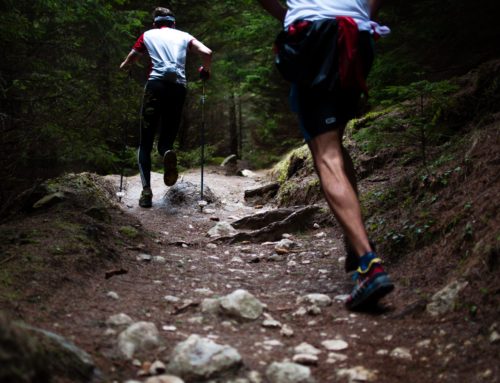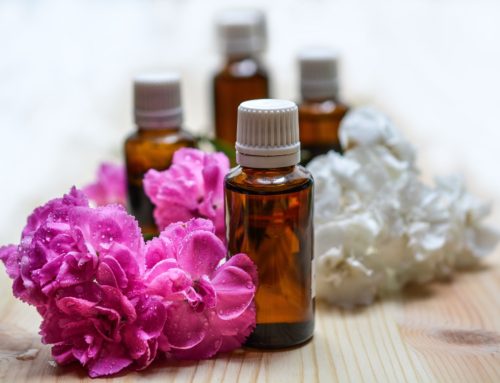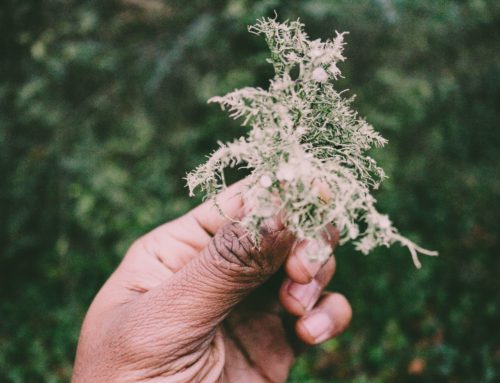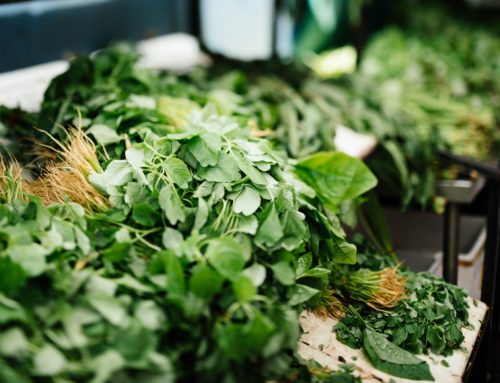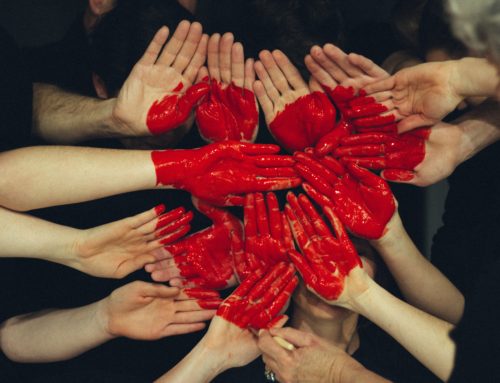Emotional stress. Help using essential oils for Horses.
(Editor note: This is a research paper and justly, is substantiated for academic reasons. Feel free to skip ahead to “Case Study or Findings” if wish)
By: Penny Chaney, March 2018
Abstract
This research paper will focus specifically on wild horses caught in the western U.S.A. region of lands controlled by the Bureau of Land Management (BLM), which is an entity of the United States Government, to control the wild horse and burro (donkey) population (Schweig 2017). These wild horses are penned and held until they are sold, adopted or sent for slaughter. While these wild horses are penned, care for these horses is minimal. They are not provided with proper shelter from the elements. They tend to be under fed, medical needs are lacking and grooming is non-existent. They may display bad behavioral and emotional characteristics following an abusive experience. Many experience physical and mental abuse and neglect. Stress and anxiety in these horses may cause them to exhibit distrust and fear. Most times the horse will not allow touch by humans (McBride et. al. 2012). The horse may be uncontrollable, medical examinations may even require sedation (Harris 2007). Abnormal behavior such as bucking, rearing, biting, kicking and running uncontrollably can be harmful to both the handler and the horse (Minero & Canali 2016). The author concludes from research of her case study that using essential oils with equines can have a vital role in managing emotional stress and anxiety (Rennels 2008), which then calms the frightened horse, making them easier to handle (Mendonca 2014). With wild horses fortunate enough to be adopted, essential oils can have a very positive result assisting abused wild horses in overcoming stress and anxiety which makes them easier to handle and receive human contact. They can receive proper medical care and grooming, the first steps to becoming domesticated.
Introduction and Aims
Following the author’s successful use of essential oils with wild horses which have been adopted that display emotional and mental stress, this research paper set out to explore whether essential oils could help overcome the effects of emotional stress and anxiety in a horse caught in the wild which displays behavior consistent with having been and mentally abused whilst in captivity.
What are some of the typical characteristics of mental stress and anxiety found in horses that are caught in the wild and rescued from the killing pen?
Can essential oils help horses caught in the wild and kept in a kill pen overcome their fear of becoming domesticated and relieve the characteristics of emotional stress and anxiety (fear of human touch, bucking, rearing, etc.)?
Could treating a horse caught in the wild, penned and having gone through the process of adoption with essential oils be more cost effective and less invasive than other alternative methods of treatment?
Literature Review
What are some of the typical characteristics of equine Emotional stress and anxiety?
The two main ways to catch wild horses are with either live trapping or rounding them up with the use of helicopters (Patton 2015). Live trapping a horse is done by hay being strewn about the ground in a pen as bait. When the horse goes too far into the trap, a tripping line closes the gate behind the horse. The horses are then loaded into a trailer for transport to BLM holding pens (Patton 2015). This method of capture and loading the horses into a trailer for transport is known to cause injuries and even death (Patton 2015). The Federal laws were changed in the early 1970’s to allow use of helicopters to gather horses (Laughlin 2008). The helicopter method of capture gathers the horses and herds them along much like herding cattle toward a gathering pen (Laughlin 2008). Animal right activists have reportedly documented injuries and deaths of horses with visual documentation of helicopter round ups (Patton 2105). A report for the American Wild Horse Prevention Campaign states that of 1,922 horses captured by BLM over a six-week period, 86 have died. Dozens more were injured in the helicopter-led stampede or in the holding pens, and forty pregnant mares have aborted because of related stress. Photos of moldy hay being trucked to feed the penned horses have been posted. This repast is known to either kill the horse ore make the horse seriously ill (Prendergast 2010). Both methods of capture are known to cause the horse to experience terror and panic which lead to injury and death (Patton 2015).
Once capture is complete, the danger for these horses is not over. The horses are put into holding pens, where a sorting process is completed. Studs in one pen, dry mares in one pen and mares with colts in another pen (Laughlin 2008). Animal rights activists have criticized BLM for lacking space and shelter from the elements for the captured horses (Schweig 2017). BLMs “Dead and Destroyed” reports, obtained through the Freedom of Information Act shows that 199 horses died in the Burns corral between 2010 and 2013 (Patton 2015). In one instance, 81 mustangs were simply found dead in the corrals, 41 from unknown causes (Patton 2015).
In the decade since the Burns Amendment stripped away over 34 years of protection for horse and burrow herds, these animals have been sold for commercial purposes, including slaughter (Wagner & Walker 2018). BLM claims not to sell wild horses for slaughter but has acknowledged that it has repeatedly sold horses to known kill buyers, including a buyer that bought 1,800 and promptly sent these horses to Mexico for slaughter. Despite these findings, no action was taken (Wagner & Walker 2018). BLM encourages people to adopt these horses but the treatment they have received during the round up and put into holding pens has been less than acceptable (Wagner & Walker 2018).
Forty-six states in America in addition to Washington, DC currently consider at least one type of animal cruelty as a felony offense. However, these laws are not specific enough and it is hard to prosecute and convict the abuser (Mason 2011). There is a link between human violence and animal cruelty, one study found that 88% of homes with abused children, animal abuse or neglect was also occurring (DeViney et. al. 1983). Because of this link, in 2016, the FBI (Federal Bureau of Investigation) started including animal cruelty cases as a class A felony in its National Incident Based Reporting System, which is used by law enforcement agencies across the country. Preventing and punishing animal abuse, cruelty and neglect are largely the responsibilities of if the individual states, some states have no apparent legislation to successfully charge and prosecute equine abusers. Consequently, precise data reflecting animal cruelty remain elusive (Mason 2011).
These two laws are examples:
Domestic:
A person commits the crime of animal abuse in the first degree, except as otherwise authorized by law, when the person intentionally, knowingly, recklessly, or with criminal negligence: A: causes serious injury to an animal: or
B: causes the death of an animal
(Otto 2010)
Federal:
The federal Bureau of Land Management (BLM), which oversees management of wild horses and burros (donkeys) on public lands under the 1971 Wild Free-Roaming Horses and Burros Act, said sharply rising energy costs are driving budget problems that compel the agency to consider euthanizing “excess” animals (BLM 2008).
Terminology such as abuse, neglect, suffering and cruelty, may be undefined by state statutes and thereby, leave interpretation to the court of law (Mason 2011). These laws differ from state to state. There is no database to track abuse. Before 2016, the FBI categorized animal cruelty offenses as “other” when reported with other crimes, such as child abuse, which makes it difficult to have accurate figures giving the scale of equine abuse. However, in 2016 The FBI’s National Incident-Based Reporting System added an animal cruelty offense category (Otto 2010). The way the figures are collected needs to be reviewed so that wild equines are documented in a separate category so the scale of the problem can be clearly identified. Many cases of abuse are neither reported, nor do they make it to trial. Offenders many times receive a light sentence or fine (Mason 2016).
A horse that has been caught in the wild for sale, slaughter or adoption and has been abused or traumatized will exhibit signs of mental stress and anxiety (Harris 2007). These behaviors are responses to improper handling and/or training (Hill 2006). A wild horse which has been traumatized and abused experience lack of appetite, they are skittish and timid. The horse might feel rushed, threatened or confused. He will balk, shy away, halter pull, bolt or rear, bite and kick, buck or cannot be caught (Hill 2006). This can cause injury to both the horse and the handler. These characteristics are especially difficult to treat in rescue animals as it is not known exactly how the horse was abused, or how long the horse was subjected to abuse.
Physical symptoms of abuse and neglect in a horse caught in the wild and brought to a kill pen for the purpose of being sold, adopted or slaughtered include the following: Unkept coat, underweight, open wounds, muscle atrophy, dull and depressed demeanor, dental disease, and more (Mason 2011). Equines who suffer from stress and anxiety experience poor sleep habits, poor eating habits, body pain, headaches, decreased trust, feelings of guilt, low self-esteem and emotional instability (Kostiuk 1998). Equines that suffer with stress and anxiety experience restlessness, agitation and depression, restlessness and sleep disturbances (Zimmerman 2010). Working with the cognitive process can improve positive emotions and experiences in a wild horse, such as enhancing physical, social and cognitive enrichment (Boissy et. al. 2007), which could help the equine be more focused, decreasing unwanted habits and behavior.
There are additional problems with rehoming a wild horse from a kill pen. They are not accustomed to humans, first contact with a human has been traumatic and life threatening for the horse, as shown above. They have no idea what to expect or what is expected of them. Stress and anxiety in a wild horse becoming domesticated is to be expected. A study was conducted to investigate whether heart rate variability (HRV) could assess alterations of the autonomic nervous system (Visser et. al. 2002). Forty-one horses were studied to quantify temperamental traits on the basis of heart rate (HR) and HRV. During the tests, mean HR and two heart variable indices, e.g. standard deviation of beat-to-beat intervals (SDRR) and root mean square of successive beat-to-beat differences (rMSSD), were calculated. In both tests, horses showed a significant increase in mean HR and decrease in HRV measures, which suggests a marked shift of the balance of autonomic nervous system sympathetic dominance. The additional increase in HR, the nonmotor HR, was more pronounced in the untrained horse, suggesting that this nonmotor HR might be due to the level of emotionality. When a wild and stressed horse is confined to a stall and/or a round pen, unwanted behavior may be observed due to anxiety and stress (Rivera et. al. 2002). Having one trainer has been known to have a positive effect on the wild horse, which could reduce the stress level of the horse (Hausberger & Muller 2002). Essential oils and having just one handler may help improve stress, anxiety and behavioral concerns in a wild horse that has been rehomed.
Conventional treatment of a horse suffering with stress and anxiety, such as those caught in the wild and subsequently adopted, may include sedation with drugs to keep the horse calm, (which could cause injury to the horse) or euthanasia as a last resort (Harris 2007). The effects of the sedative romifidine, alone and in combination with the sedative butorphanol, in the horse lowers the response of touch and sound stimuli as well as muzzle tremor as the horse attempts to walk forward (Clark et. al. 1991). Sedation has also been shown to cause cardiovascular changes, hypertension followed by hypotension (Clark et. al. 1991). The Veterinary costs could be extremely high.
Natural Methods/Essential oils
The use of alternative therapies for equines have been used throughout history. Acupuncture and acupressure are known to have been used as therapies for horses for more than 3,000 years (Pascoe 2012). Asclepius (considered one of the Fathers of medicine, about 130 BCE) restored balance within the body of the horse by using massage, fresh air, diet and exercise (Mars & Fielder 2015). The author is seeking to place the role of essential oils into a framework of restoring balance through this approach.
Some alternative methods of treatment for emotional stress and anxiety due to abuse in a wild horse may include some modalities such as massage, Traditional Chinese Medicine and Aromatherapy, to name a few. Any medical modality needs to show that it is safe and effective (Ross et. al. 2001). Essential oil therapy as a special part of phytotherapy (a science-based herbal medicinal practice) for animals is the traditional use of essential oils to promote and maintain balance in all systems of the body (Barelli 2013).
A preliminary study of massage on ten mature, injury free, domesticated horses showed a significant reduction in the heart rate (McBride et. al. 2004). The areas given massage are as follows: thoracic trapezius [withers], mid-brachiocephalicus, cervical ventral serrate and cervical trapezius[mid-neck], proximal gluteal fascia and proximal superficial gluteal [croup], preferred sites of allogrooming (mutual grooming between conspecifics), proximal mid-semitendinosus [second thigh], lateral triceps, proximal extensor carpi radialis and proximal common digital extensor [forearm], proximal brachiocephalicus, proximal splenius and ear [poll and ears], which are non-preferred sites of allogrooming, on stress related behavioral and physiological heart rate measures in horses. All sites except the forearm resulted in lowering the heart rate, with the preferred sites of allogrooming having the most effect (McBride et. al. 2004).
As massage is a known method for equine stress reduction on injury free and already domesticated horses, it is possible that the addition of essential oils to the massage process could enhance the benefits of massage. A different study was conducted to quantify pain and anxiety relief in human patients from therapeutic massage versus therapeutic massage in conjunction with aromatherapy (Rivard et. al. 2014). Average pain reductions were greater during combined aromatherapy and massage sessions versus therapeutic massage alone. Similarly, average anxiety reductions in humans were greater when massage was accompanied with aromatherapy. There may be some relevance to assisting a horse with massage in conjunction with essential oils. However, research on massage with the use of essential oils with equines needs more study. Hence this paper.
For an abused horse, massage in itself may be traumatic for the horse as they are fearful of humans. Massage might be an effective therapy for a wild horse once a degree of trust with a new owner is established.
CASE STUDY
In a case study conducted by this author, a horse caught in the wild, exhibiting stress, anxiety and fear of being touched was helped with an essential oil blend. The handler put the blend on the hand and squatted down, letting the horse smell the blend and approach the handler on his own. Once the horse was comfortable being close to the handler, the horse was able to overcome the fear of touch and so using massage became possible!
Traditional Chinese Medicine (TCM) has different modalities such as herbs and acupuncture, (Huenefeld 2018) and includes acupoint stimulation and acupressure (Yip & Tse 2003). Mu Li, Xuan Shen and He Shou Wu are known to calm, nourish and cool the blood in a domesticated horse (Harris 2007). If Qi (energy) and Blood are flowing in correct balance, then the body is able to heal itself (Huenefeld 2018). According to TCM, the body of the horse is covered by channels called meridians. These meridians carry the Qi throughout the body. Along these meridians are access points where flow can be affected. These points are the acupuncture points used for treatment (Huenefeld 2018). Once a wild horse will accept human contact, exploration of combining the two modalities of TCM and aromatherapy could be complimentary to horses with anxiety and emotional stress due to abuse (Huenefeld 2018). In the meantime, until a wild horse accepts the new owner, it is possible to administer essential oils with inhalation to soothe and calm the horse as this does not involve touching which a wild horse could find life threatening. Inhalation of essential oils are non-invasive and not life-threatening for the horse.
The expense of acupuncture, massage, etc. is $90.00-$250.00 per treatment (Pascoe 2012). The use of authentic essential oils may be more cost effective.
Some modalities can be used in conjunction with one another. A different study was conducted on humans to assess the effect of acupoint stimulation with electrodes, combined with acupressure and lavender essential oil for lower back pain relief. Results showed that acupoint stimulation followed by acupressure with lavender oil were an effective method for short term lower back pain relief. To complement mainstream medical treatment for lower back pain, the combined therapy of acupoint stimulation followed by acupressure and lavender oil may be one choice as an add-on therapy for short term lower back pain relief (Yip & Tse 2003). A different study was conducted to quantify pain and anxiety relief in patients from therapeutic massage versus therapeutic massage in conjunction with aromatherapy (Rivard et. al. 2014). Average pain reductions were greater during combined aromatherapy and massage sessions versus therapeutic massage alone. Similarly, average anxiety reductions were greater when massage was accompanied with aromatherapy. It is feasible to assist horses with massage in conjunction with essential oils for other concerns the horse may have, such as relieving stress. However, this would require further research.
The Therapeutic Use of Essential Oils
Essential oils are the vital energies from the plant to help heal us on many levels; physically, emotionally, mentally and spiritually. The chemical constituents of specific oils are found inside seeds, roots, stems, leaves, flowers, wood bark, resins and the peel of citrus fruits (Hargis 2015).
The therapeutic application of aromatic essential oils is known as aromatherapy. Essential oils are considered antiseptic, antimicrobial, detoxifying and rejuvenating, and can help with emotional issues such as anxiety and stress (Krishan & Narang 2015). Humans and animals can benefit from essential oils as well as plants. The body identifies and accepts essential oils because of similarities in the chemical structure of plants and human cells for non-self-recognition and anti-microbial defense (Nurnberger et. al. 2004). Essential oils and blood have many properties, including constituents for regeneration and hormone-like chemicals (Rennels 2008). Essential oils are easily absorbed through the Olfactory system through inhalation or applied topically (Hargis 2015). When applied topically, with or without massage, the chemical constituents are absorbed through the skin and into the bloodstream where they are metabolized by the liver (Bagetta et. al. 2016). Essential oils can hasten the recovery time in acute-stressed horses (Ferguson & Browning 2013) by balancing the emotions and body. The behavior of the traumatized horse stated above may make it impossible to safely apply essential oils topically. A wild horse that has a fear of touch can cause injury or death to both the horse and the handler. In which case, inhalation would be more suitable in assisting the wild horse with essential oils. The chemical constituents found in essential oils are very powerful, low dose, and small amounts are indicated. Therefore, essential oils should be used after consulting aromatherapy information, which will help make up the correct blend of oils and give proper instructions on how to administer the essential oils for safety reasons.
Rationale and Case study: Nemo

The author conducted a case study on three horses that were captured as stated above and adopted. The first horse treated was a wild horse named Nemo. Nemo is a male horse, approximately two and a half years old, fourteen hands in size. At some time between capture and being kept at the slaughter house he was subjected to emotional abuse, physical abuse and trauma. He was rescued from the slaughter house in January 2017. The horse was suffering with very high stress and anxiety. He was very fearful, had low self-esteem and lack of self- confidence. He did not trust humans. He was fearful of being touched by humans. The horse displayed behavioral problems such as bolting and running away. Once fear of touch was addressed with the use of the essential oil blend, with the inhalation method, daily grooming such as brushing, cleaning and hoof trimming became possible. This process took a lot of patience and was enabled with the use of the essential oil blend.
After a year, his mental state was still plaguing him. He was very anxious, skittish and still had little trust in humans. The author’s focus with Nemo was to calm the horse down and reduce his fear, anxiety, depression and instability. The trauma from past experiences was a big factor that needed to be addressed in order to bring him to a more positive state of mind. A clear mind, uplifted spirit and calming of fear was needed to be able to address his sense of insecurity and low self-esteem, relieve worries and create a sense of well-being.
Some essential oils should not be administered to horses. There are some essential oils such as digitalis (seed of the foxglove plant, Digitalis purpurea L.), where most symptoms are cardiac and gastrointestinal in nature and it is potentially lethal (Khan et. al. 2010)); Pennyroyal (Mentha pulegium L.) is known to cause acute hepatic and lung damage (Gordon et. al. 1982) and Wormwood (Atremisia absinthium L.) etc. is known to exhibit neurotoxic properties leading to dose-dependent toxic-clonic seizures in animals (Lachenmeier 2010). These specific essential oils can be harmful and dangerous to horses and humans.
A specific blend of essential oils was created to address Nemo’s needs comprised of geranium (Pelargonium graveolens L’Her.), juniper berry (Juniperus communis L.), lavender (Lavandula angustifolia Mill.), orange (sweet) (Citrus sinensis (L.) Osbeck) and ylang ylang (Cananga odorata (Lam.) Hook.f. & Thomson). The author’s rationale for these essential oils are as follows:
20% Geranium (Pelargonium graveolens L’Her). Geranium is in the alcohol chemical family (Tisserand & Young 2014). The main chemical constituents of geranium are 24-27-7% Citronellol, 15.7-18.0% Geraniol and 6.5-6.7% Citronllyl formate. These chemical constituents exhibit the anti-depressant activity by decreasing the lipid peroxidation and increasing the antioxidants in cerebral cortex (Mahboubi 2015). Geranium is known to have anti-depressant, refreshing and relaxing properties as well as being a sedative (Higley & Higley 1998). Geranium is known to help with anxiety, depression, consoling rigidity, instability, moodiness, insecurity, low self-esteem, irritability, nervousness, acute fear, worry, discontent and headaches (Hargis 2015). Geranium balances hormones and moods. It has been used on young, moody and sometimes temperamental race fillies (Bird 2000). Geranium is shown to address a wide range of Nemo’s psychological symptoms. With this in mind, geranium was chosen for this blend.
20% Juniper Berry (Juniperus communis L.). Juniper berry is in the terpene chemical family (Tisserand & Young 2014). The main chemical constituents of Juniper berry are 24.1-55.4% α-pinene, 2.1-6.0 β-pinene and 1.5-17% Terpinen.). A study was done with thirteen women on the effects of a-pinene. The results of this study clearly show that olfactory stimulation by the a-pinene induced a significant increase in parasympathetic nervous activity and thereby induced physiological relaxation (Harumi et.al., 2016). Juniper is known to have detoxifying and cleansing properties as well as being a stimulant (Higley & Higley 1998). Juniper (berry) Is known to relieve worries and will also remove from the energy field any debris from past experiences with a horse (Bird 2000). My rationale was to help Nemo let go of his past experiences and relieve worry.
20% Lavender (Lavandula angustifolia Mill.). Lavender is in the ester chemical family (Tisserand & Young 2014). The main chemical constituents of lavender are 30.45% linalool and 41.6% linalyl acetate. Linalool is known to increase social interaction and decrease aggressive behavior as well as strengthening the suggestion that linalool can be useful as a mean to attain relaxation and counteract anxiety (Linck et. al. 2010). In a study of the effects of lavender, linalool and linalyl acetate were shown to relieve depression or stress. For example, lavender decreases level of anxiety and improves mood and significantly improve sleep quality (Sayorwan et.al. 2012). Lavender is known to have anti-depressant and regenerative properties as well as being a sedative (Higley & Higley 1998). Lavender is known to help alleviate pain, anxiety, depression and create a sense of well-being (Louis & Kowalski 2002). Lavender has been known to help with stress and anxiety disorders, (Bagetta et. al. 2016). A study was done to test the effects of lavender oil on horse stress. Twenty-eight horses were divided into two groups, one group was treated with just vegetable oil. The other group was treated with a blend of 10% lavender oil in vegetable oil. A series of stress tests showed that heart rates and stress behavioral indicators were lower in lavender oil (linalool) treated horses (Poutaraud et. al. 2016). My rational for lavender was to lower the stress level in Nemo, which might decrease behavioral issues.
20% Orange (sweet) (Citrus sinensis (L.) Osbeck). Orange is in the terpene chemical family (Tisserand & Young 2014). The main chemical constituents of orange are 95%(+)-Limonene and 1.8% β-Myrcene. A study of orange essential oil and its components shows to have sedative and relaxing actions in rats. The presence of limonene and β-Myrcene are well known to have depressant activity on the central nervous system (Leite et. al. 2008). Orange is known to have anti-depressant properties as well as being a sedative (Higley & Higley 1998). Orange is known to activate the parasympathetic nervous system, which can significantly improve personal orientation to cognitive function (Jimbo et al. 2009). Orange provides self-assurance and envelopes your horse with a happy hug of warmth (Bird 2000). My rationale for orange with Nemo was to help his notable depression, nervous energy, and uplift his spirit. In doing so, Nemo might be able to be more focused on the task at hand.
20% Ylang Ylang (Cananga odorata (Lam.) Hook.f. & Thomson). The main chemical constituents are 11.7-30.0% Linalool, 4.3-14.9% Benzyl benzoate and6.2-11.0% geranyl acetate. These chemical constituents have shown to be potentially effective for major depressant disorder as it clinically shows promise as a safe alternative to traditional health care to relieve stress, reduce stress and improve mood (Kumar & Gandhi 2016). Ylang Ylang is found in the ester chemical family (Tisserand & Young 2014). Ylang Ylang is known to have anti-depressant properties as well as being a sedative (Higley & Higley 1998). Ylang Ylang is known to help with anxiety, depression, mental fatigue; palpitations (Higley & Higley 1998) Ylang Ylang has shown an euphoric and relaxing effect when used on a stallion (Morag 2015). My rationale for Ylang Ylang was to help reduce stress levels and improve mood in Nemo, which could create a sense of well-being with Nemo.
Administering essential oils to a wild horse that has a fear of being touched can be done with inhalation. The horse is allowed to smell the blend directly out of the uncapped bottle by wafting the bottle back and forth under his nose. If he does not like it, he will appear disinterested or turn away. If he likes this essential oil blend, he will lean forward or do the Flehman response where he curls his lip and traps the scent in his nasal cavities. If the horse likes the oil or blend of oils, the handler can put a few drops of this blend into the palm of the hand, rub hands together, cup the hands and allow the horse to inhale the essential oil blend from the hands every morning and evening (Hill 2006). If the horse does not like the blend further investigation can take place to find essential oils that have a positive response for him. The author’s experience suggests that following this method of treatment can reduce stress and anxiety. Using inhalation as a method of administering the essential oils overcomes potential problems of the horse being touched, massaged and handled. It also reduces the potential for injury to the handler.
Nemo began to change with just one use of this blend.
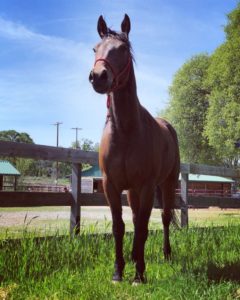
The essential oil blend was administered with inhalation as stated above. Nemo cautiously approached the handler on his own for the first time, sniffing and finally nuzzling the handler. He was comfortable with the handler touching him. After three months of using this blend, the stress, anxiety and fear had significantly decreased with this horse. The horse has developed an increase in trust and confidence. His self-esteem is greatly improved. He now enjoys his daily grooming, he is happy and curious. With using this blend for six months, Nemo has started training for riding and loading into a trailer for transport. A completely different horse from when he was rescued.
This blend has been so successful with Nemo, the author felt it was worth more anecdotal research. A wild colt and filly had just been rescued from the same slaughter house. They are of unknown age and breed. They had exhibited characteristics of emotional stress and anxiety. The handler started essential oil therapy with the same process used on Nemo, with positive results. Within two weeks of using the essential oil blend, the colt will now enter the stall and come up to the handler, while the filly is more skittish. She will stick her head inside of the stall but will not enter. The positive benefits of essential oils can bring mental and physical balance to these two horses, which will increase their quality of life (Chaney 2017).
Findings and Results
Conventional treatment for wild horses suffering with stress and anxiety due to abuse is for the most part limited to either sedation or euthanizing the horse (Harris 2007). As noted earlier, it is possible to assist wild horses with alternative modalities such as massage, acupuncture, and aromatherapy once they will accept human touch (Ross et. al. 2001). In the case of a wild and abused horse that is fearful of touch, inhalation of essential oils is the safest form to begin with and help to address fear, stress, and anxiety issues (Hill 2006).
The use of aromatherapy has shown that a wild horse can experience a reduction of fear, anxiety, stress, depression, worry and discontent because of the chemical constituents found in essential oils such as citronellol and geraniol found in geranium (Pelargonium graveolens L’Her), linalool and benzyl benzoate found in Ylang Ylang (Cananga odorata (Lam.) Hook.f. & Thomson), along with linalool and linalyl acetate found in lavender (Lavandula angustifolia Mill.), are known to reduce fear, anxiety, stress, depression, worry and discontent; (Higley & Higley 1998), (Linck et. al. 2010).
The chemical constituents a-pinene and b-pinene found in juniper (Juniperus communis L.) are known to induce an increase in parasympathetic nervous activity (Harumi et.al. 2016) Juniper is also known to relieve worries and will also remove from the energy field any trauma from past experiences with a horse (Bird 2000). The main chemical constituents -limonene and B-myrcene, found in orange (sweet) (Citrus sinensis (L.) Osbeck) have been known to increase cognitive function and provides self-assurance (Jimbo et al. 2009). Orange provides self-assurance (Bird 2000). Essential oils can be instrumental in restoring mental well-being, uplifting of the spirit, increasing self-worth and security of the wild horse. This leads to a healthier, happier and well-balanced horse. Using essential oils for anxiety and stress can play a vital part in saving the lives of many wild horses and increasing the quality of their life (Franz et. al. 2010).
More research with the use of essential oils on a wild horse suffering with stress and anxiety is needed. However, the author’s experience suggests that essential oils can be beneficial to the rehabilitation of a wild horse suffering from trauma, anxiety and stress following abuse and neglect. The use of essential oils is a viable alternative.
Discussion and Conclusion
Wild horses that have been brought to the slaughter house face almost certain death. The laws for animal abuse are too vague and difficult to enforce (Mason 2011). No sufficient database is in place to track the abuse (Otto 2010). More robust legislation in the U.S.A. could be written and enforced to protect wild horses from abuse or death. Also, the laws are not specific enough to prosecute and convict the abuser (Mason 2010). There is not a sufficient database to track abuse (Otto 2010). There is a need to improve in these two areas.
To improve the quality and mental state of an abused horse, he needs to be removed from his abusive environment and placed in a safe and secure place, with shelter from the weather (Hill 2006). Documenting round ups may provide a key way for policy makers to pass more robust legislation to change how tax dollars might be misused to fund an inhumane, costly and ineffective system of removing wild horses (Schweig 2017) Immediate attention must be given to the physical abuse. Proper food, water and medical needs are mandatory. The horse requires a complete and thorough examination with a Veterinarian. Once the physical diagnosis has been made, a plan with essential oils could be administered alongside the Veterinary treatment. For the wild horses that are rescued or suffer with stress and anxiety due to physical and mental abuse, alternative modalities can be used either separately or in conjunction with one another to improve the stress and anxiety levels in equines (Rivard et. al. 2014). Horses remember past associations with great clarity for a very long time, good or bad (Leblanc 2103). While the bad memories cannot be erased, we can add as many new good memories as possible, which could help the horse with cognitive function, keeping him emotionally grounded and increases his self-esteem (Hill 2006). The knowledge, commitment, love and care from the horse’s owner are the foundation of the treatment of the horse and cannot be underestimated. This will help to build trust and increase the confidence of the horse. Horses respond favorably to repetition and consistency that is given in a positive environment (Hill 2006). The handler must be patient with the horse, especially with horses rescued from a slaughter house. It is not known what the horse has endured, and the horse might be uncontrollable (Harris 2007). Doing daily care such as brushing, grooming and feeding encourages touch with the horse (Hill 2006). The above mentioned takes a great deal of commitment from the handler. Adding the essential oils can have very positive results in helping to calm the horse, improve his cognitive thinking, decrease the depression, anxiety, stress and mental fatigue. Essential oils can be helpful in removing any debris of past experiences, uplift and increase the sense of well-being and self-esteem of the wild horse (Chaney 2018).
This research paper is based on the author’s experience with three wild horses exhibiting stress and anxiety due to physical and mental abuse during capture. The specific essential oils had immediate positive results. It is feasible that other essential oil blends would have the same positive effect. Although this research with essential oils might have relevance for other wild horses exhibiting stress and emotional anxiety following abuse, further research is needed in this area.
As knowledge of the use of essential oils spreads, the horse community might be able better able to handle horses in a safe, non-invasive, and cost-effective manner that does not have to include sedation or euthanizing the wild horse. Essential oils should be researched as the author did above for equine safety reasons.
References:
Bagetta, Giacinto, Cosentino, Marco, Sakurada, Tsukasa (2016) Aromatherapy Basic Mechanisms and Evidence-Based Clinical Use Boca Raton, Fl. CRC Press
Barelli, Sophie (2013) Essential Oils in Veterinary Use: A Survey of Recent Data of the Last Decade Magistra der Pharmazie (Mag.pharm.) pp.12
Bird, Catherine (2000) Calming Aromatherapy for Fear and Anxiety. Natural Horse Magazine vol. 2 (4)
Bird, Catherine (2000) Scented Horses Natural Horse magazine vol. 2 (2)
Bureau of Land Management (2008),
https://savetheworldshorses.wordpress.com/wild-horses/
Boissy, Alain, Gerhard Manteuffel, Margit Bak Jensen, Randi Oppermann Moe, Berry Spruijt, Linda J. Keeling, Christof Winckler, Bjorn Forkman, Ivan Dimitrov, Jan Langbein, Morten Bakken, Isabelle Veissier, Armaud Aubert (2017), Assessment of Positive Emotions in Animals to Improve their Welfare Physiology& Behavior vol. 92 (3) pp. 375-397
Chaney, Penny CA (2017), unpublished work
Clark, K.W., England, G.C.W., Goosens, L., (1991) Sedative and Cadriovascular Effects of Romifidine, alone and in Combination with Butorphanol, in the Horse Veterinary Anaesthesia and Analgesia vol. 18 (1)
DeViney, E., Dickert, J., Lockwood, R. (1983) The Care of Pets Within Child abusing Families International Journal for the Study of Animal Problems vol 4 pp. 321-329
Ferguson CE, Kleiman HF, Browning J. (2013), Effect of Lavender Aromatherapy on Acute-Stressed Horses Journal of Equine Veterinary Science vol. 33 (1) pp. 67-69
Franz, C., Baser, K.H.C., Windisch, W., (2010) Essential Oils and Aromatic Plants in Animal Feeding-a European Perspective. A Review. Wiley Online Library Flavour and Fragrance Journal vol. 25 (5)
Gordon, W. Perry, Forte, Anthony J., McMurtry, Randolph J., Gal, Joe, Nelson, Sidney D. (1982) Hepatotoxicity and Pulmonary Toxicity of Pennyroyal oil and its Constituent terpenes in the mouse Toxicology and applied Pharmacology vol.65 (3) pp.413-424
Hargis, Lorrie, RA. (2015) Using Common Scents, A Practical Guide to Aromatherapy Bakersfield, Ca., French Kitchen Table Publishing
Harumi, Ikei, Song, Chorong, Miyazaki, Yoshifumi (2016) Effects of Olfactory Stimulation by a-pinene on Automatic Nervous Activity Journal of Wood Science vol. 63 (6) pp. 568-572
Hausberger, M., Muller, C., (2002) A Brief Note on Some Possible Factors Involved in the Reactions of Horses to Humans Applied Animal Behaviour Science vol. 76 (4) pp. 339-344
Harris, Lindsey MA, VetMB, MRCVS, (2007), Treatment of a Mare with Behavioral Problems with Chinese Herbal Medicine AJTCVM vol. 2 (1) pp. 63-67
Higley, A., Higley C. (1998) Reference Guide to Essential Oils Olathe, Ks: Abundant Health
Hill, Cherry (2006), How to think Like a Horse North Adams, Ma Storey Publishing
Huenefeld, Randy Dr. (2018), Chinese Medicine-Equine Acupuncture, Herbal, Tui-na and Food Therapy Rolling Meadows pp. 1-4
Jimbo, D., Kimura, Y., Taniguchi, M., Inou, M., Urakami, K., (2009) Effect of Aroma Therapy on Patients with Alzheimer’s Disease Psychogeriatrics Vol. 9 (4) pp. 173-179.
Khan, Ibraheen, Kant, Chandra, Sanwaria, Anil, Lokesh, Meena, (2010) Acute Cardiac Toxicity of Neriu Oleander/Indicum Poisoning (Kaner) Poisoning Heart Views 2010 Oct-Dec; vol. 11 (3) pp. 115-116
Kostiuk, Carol, RN, Parish Nurse, CEO Quintessence Aromatics, Inc., (1998) Aromatherapy Benefits for Survivors of Abuse International Journal of Clinical Therapy 2008 vol. 5 (1) pp. 37-40
Krishan, Gopal, Narang, Asmita (2015) Integrative therapies in Veterinary Practice American Journal of Pharmacology and Pharmacotherapeutics vol.2 (1) pp. 50-55
Kumar,Anuj, Gandhi, Abhay Jayprakash (2016) Aroma Therapy in Major Depressive Disorders (MDD): An Assessment World Journal of Pharmacy and Pharmaceutical Sciences vol. 5 (5) pp. 1224-1241
Lachenmeier, Dirk W. (2010) Wormwood (Artemisia absinthium L.)-A Curious Plant with Both Neurotic and Neuroprotective Properties? Journal of Ethnopharmacology vol.131 (1) pp. 224-227
Leblonc, Michel-Antione (2013) The Mind of The Horse An Introduction to Equine Cognition Harvard University Press Cambridge, Mass. London, England
Laughlin, Mike (2008) Rounding up Wild Horses Range Magazine Spring 2008 Issue
Lawless, Julia (1995) The Illustrated Encyclopedia of Essential Oils Shaftesbury, Dorset Element Books Limitedbetsky, E., (2010)
Leite, M., Fassin, J. Jr., Baziloni, E., Almeida, R., Mattei, R., Leite, J. (2008) Behavioral Effects of Essential Oil of Citrus Aurantium L. Inhalation in Rats Rev. Bras. Farmacogn vol. 18 suppl. 0
Linck, V., da Silva, A., Figueiro, M., Caramao, E., Moreno, P., Elisa (2010) Effects of Inhaled Linalool in Anxiety, Social Interaction and Aggressive Behavior in Mice Phytomedicine vol. 17 (8-9) pp. 79-683
Louis, Margaret, RN PhD., Kowalski, Susan D. RN PhD. (2002) The Use of Aromatherapy with Hospice Patients to Decrease Pain, Anxiety and Depression and to Promote an Increased sense of Well-Being American Journal of Hospice and Palliate Medicine Vol. 19 (6) pp. 381-386.
Mars, Brigitte, Fielder, Chrystal (2015) Home Reference to holistic Health & Healing Fair Winds Press Beverly, Ma
Mason, Clara Ann DVM (2011) How to Prosecute Cases of Equine Abuse AAEP Proceedings vol. 57 (2011) pp. 305-309.
Mason, Clara Ann DVM (2016), Protecting the Abused or Neglected Horse Veterian Key Chapter 209 pp. 1-3.
McBride, Mills, (2012), Psychological Factors Affecting Equine Performance BMC Veterinary Research vol.8 pp.1-18
McBride, S. D., BSc, PhD, Hemmings, A. BSc, MSc, Robinson, K, BSc A Preliminary Study on the effect of Massage to Reduce Stress in the Horse Journal of Equine Veterinary Science 2004;24 pp. 76-81
Mendonca,Tiago Serrada (2014), Learning and Cognitive Capabilities in Horses (Equus Caballus): Description of the Semiochemical Approach Biblioteca pp. 3159
Minero, Michela, Canali, Elisabetta (2016), Welfare Issues of Horses: An Overview and Practical Recommendations Italian Journal of Animal Science vol.8 (1) pp. 219-230
Mahboubi, Mohaddese (2016) Rosa Damascena as Holy Ancient Herb with Novel Applications Journal of Traditional and Complementary Medicine. Vol.6 (1) pp. 10-16
Morag, Nayana (2015) A Day in the Life of Essential Oils Natural Horse Magazine Special E-Book Amazing Essential Oils Far more than Just a Scent pp. 19, 20
Nurnberger, T., Brunner, F., Kemmerlng, B., Piater,L (2004) Innate Immunity in Plants and Animals: Striking Similarities and Obvious Differences Wiley Online Library Immunlogical Reviews
Otto, Stephan (2010) ALDF Model Animal Protection Laws Collection Animal Legal Defense Fund 15.0 edition pp.7
Pascoe, Elaine (2012) Learn What Treatments Such as Acupuncture, Chiropractic, Rolfing, Herbal Remedies and Homeopathy Can and Can’t do for your Horse Practical Horseman Magazine June 2012 Issue
Patton, Vince (2015) Live Trapping Often Results in Death for Wild Horses OPB pp.1-13
Poutaraud, Anne, Guilloteau, Laurence, Gros, Clemence, Lobstein, Annelelise, Meziani, Smail, Steyer, Damien, Moisan, Marie-Pierre, Foury, Aline, Lansade, Lea (2016) Lavender Essential Oil Decreases Stress Response of Horses Springer Link vol. 16 (2) pp. 539-544
Prendergast, Alan (2010) Wild Horse Debacle: BLM Under Fire Over Roundup Deaths, Castrations Westword
Rennels, Cheryl (2008), Equine Essential Oils Livermore, Co., Beneficence
Rivard, R., Crespin, D., Johnson, J., Dusek, J., (2014) Effectiveness of Therapeutic Massage in Conjunction with Aromatherapy for Pain and Anxiety Relief of Hospitalized Patients Journal of Alternative and Complementary Medicine vol. 20 (5) pp. 1,2
Rivera, E., Benjamin, S., Nielsen, B., Shelle, J., Zanella, A.J., (2002) Behavioral and Physiological Responses of Horses to initial Training: The Comparison between Pastured versus Stalled Horses Applied Animal Behaviour Science vol. 78 (2-4) pp. 235-252
Ross, Christine DVM, Kevin Haussier DVM, DC, PhD, James D. Kennedy DVM, Daniel Marks DVM, Joseph J. Bertone DVM, MS, Diplomate ACVIM, Kimberly Henneman DVM, Kevin James May DVM (2001) Frontier Medicine: The Future and Integrative Medicine Veterinary Clinics Equine Practice vol. 17 (2) pp. 351-377
Sayorwan, W., M Pham, Siripornpanich, V., MD, Piriyapunyaporn, T., BSc, Hongratanaworakit, T., Dr., Kotchabhakdi, N., PhD, Ruangrungsi, N., PhD (2012) Journal of Medical Association Thai vol. 95 (4) pp.598-606
Schweig, Sarah (2017) 50 Wild Horses Were Just Captured by the U.S. Government The Dodo pp. 1-23
Tisserand, Robert, Young, Rodney, (2014) Essential Oil Safety Edinburgh, London, New York, Oxford, Philadelphia, St. Louis, Sydney, Toronto Churchill Livingstone Elsevier
Visser, E.K., Van Reenen, C.G., Van de Werf, J.T.N., Schilder, M.B.H., Knaap, J.H., Barneveld, A., Blokhuis, H. J. (2002) Heart Rate and Heart Rate Variability During a Novel Object Test and a Handling Test in Young Horses Physiology & Behavior vol. 76 (2) pp. 289-296
Wagner, Susan, Walker, Carol (2018) Debunking Commo Myths About Horse Slaughter and the Protection of America’s Wild Horses and Burros One Green Planet April 26, 2108
Wilkinson, S., (1995) Aromatherapy and massage in Palliative Care. Int J Palliat Nurs vol. 1 pp. 21-30
Wells, Patricia L., (2016) Essential Oils for Helping Horses Bloomington, IN. Balboa Press
Yip, Y.B., Tse, S.H.M., (2003) Complementary Therapies in Medicine Elsevier vol.12 (1) pp.28-37
Zimmermann, Elaine (2010) Lavender Essential Oil for Management of Generalized Anxiety Disorders: Evidence and Practical Experience International journal of Clinical Aromatherapy 2012 vol. 8 (1and 2) pp. 23-26.
Appendix:
Table 1: Essential oils that are recommended for horses in need of soothing (Bird, 2000) with their major chemical constituents (Tisserand & Young, 20)14 and contraindications (Hargis, 2015).
|
Essential Oil |
Major Constituents |
Contraindications |
|
|
Geranium is known to help with anxiety, depression, consoling rigidity, instability, moodiness, insecurity, low self-esteem, irritability, nervousness, acute fear, worry, discontent and headaches (Hargis, 2015) |
24-27-7% Citronellol, 15.7-18.0% Geraniol and 6.5-6.7% Citronllyl formate (Tisserand & Young, 2014) |
do not use during pregnancy |
|
|
Juniper (berry) Is known to relieve worries and will also remove from the energy field any debris from past experiences (Bird, 2000). |
24.1-55.4% α-pinene, 2.1-6.0% β-pinene and 1.5-17% Terpinen (Tisserand & Young, 2014) |
Do not use during pregnancy |
|
|
Lavender is known to help alleviate pain, anxiety, depression and create a sense of well-being (Louis, et al., 2002). Lavender has been known to help with stress and anxiety disorders, (Bagetta, et. al., 2016) |
30.45% Linalool and 41.6% Linalyl acetate (Tisserand & Young, 2014) |
Do not use during pregnancy |
|
|
Roman chamomile has been known to reduce stress, depression, tension, pain and anxiety (Wilkinson, 1995) |
8.4-17.9% Isoamyl angelate, 0-6.0% Camphene (Tisserand & Young, 2014) |
Do not use during pregnancy |
|
|
Basil will help mental alertness when inhaled (Well, 2016) |
73.4-87.4% Estragole, tr-8.6% Linalool (Tisserand & Young, 2014) |
Do not use during pregnancy or if epileptic |
|
|
Lemon is known to help with anxiety, melancholy, revive and strengthen the vital spirit (Lawless,1995) |
64.0-0.5%(+)-Limonene, 8.2-14.0%β-pinene (Tisserand & Young, 2014) |
Do not use during pregnancy, Phototoxic |
|
|
Cypress can be used for nervous tension and stress-related conditions (Lawless, 1995) |
20.4−52.7%α–pinene, 15.2-21.5% δ−3− carene (Tisserand & Young, 2014) |
Do not use during pregnancy |
|
|
Patchouli will provide a solid grounding and keep your horse aware of his feet at all times (Bird,2000) |
17.5-32.3% Pachouli alcohol, 8.7-20.7% α-Bulnesene (Tisserand & Young, 2014) |
Do not use during pregnancy. Can be irritating |
|
|
Orange is known to activate the para sympathetic nervous system, which can significantly improve personal orientation to cognitive function. (Jimbo et al., 2009) |
95%(+)-Limonene and 1.8% β-Myrcene (Tisserand & Young, 2014) |
Do not use during pregnancy. Phototoxic |
|
|
Ylang Ylang s known to help with anxiety, depression, mental fatigue, palpitations (Higley, 1998) |
14.9% α-Farnesene, 13.2% Linalool and 11.8% Benzyl benzoate (Tisserand & Young, 2014) |
Do not use during pregnancy. Do not use on hypersensitive, diseased or damaged skin, children under 2 years of age. Too much can cause headache if too concentrated |
|
Picture#1: Nemo at the time of rescue. Picture #2: Nemo 15 months after rescue.



